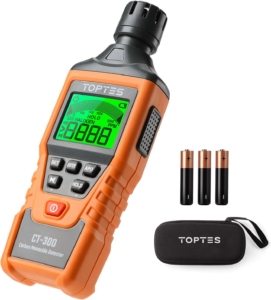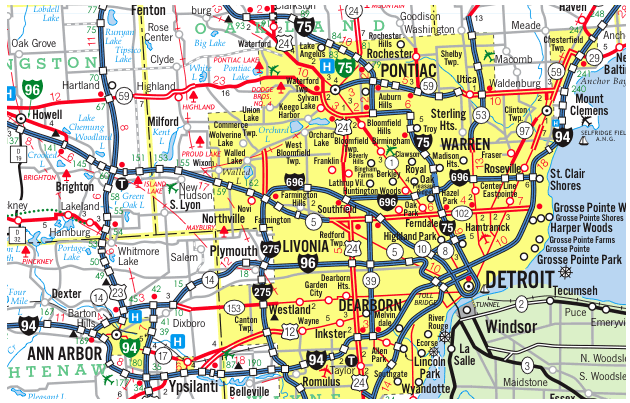The Danger of Carbon Monoxide Poisoning When Using Propane Heaters on Enclosed Construction Sites in Winter
As winter sets in and temperatures drop, staying warm on construction sites becomes a priority. Construction workers in colder climates often rely on portable fuel heaters, such as propane heaters, to maintain a comfortable working environment. While these heaters provide necessary warmth, they come with a significant safety risk—carbon monoxide (CO) poisoning—especially when used in enclosed or poorly ventilated spaces.
Understanding Carbon Monoxide Poisoning
Carbon monoxide is a colorless, odorless gas that is produced when fuels like propane, gasoline, and diesel burn incompletely. Unlike carbon dioxide, which is naturally exhaled by humans, CO is toxic and can cause serious health issues when inhaled in significant concentrations. In the worst cases, prolonged exposure to carbon monoxide can lead to unconsciousness or even death.
When a propane heater is used in an enclosed or poorly ventilated space, CO levels can quickly accumulate, leading to dangerous situations. This risk is particularly high in construction sites where temporary structures, scaffolding, and storage areas may not have adequate ventilation.
How Carbon Monoxide Poisoning Occurs on Construction Sites
Construction sites often have a mix of enclosed spaces—such as tents, trailers, or temporary structures—where workers seek shelter from the cold. These areas are sometimes heated using propane or other fuel-based heaters. When a propane heater is used in an enclosed area without proper airflow, carbon monoxide can build up rapidly.
The dangers of CO poisoning on construction sites can be exacerbated by several factors:
- Limited Ventilation: Enclosed work areas often lack sufficient ventilation, preventing fresh air from diluting harmful gases.
- Long Exposure: Workers may spend long hours in these heated areas, increasing their exposure to CO.
- Inadequate Safety Measures: Some construction sites may not have the proper CO detectors or alarm systems in place to warn workers of dangerous gas levels.
Symptoms of Carbon Monoxide Poisoning
The symptoms of carbon monoxide poisoning can range from mild to severe, and they often mimic other illnesses like the flu or fatigue. Early signs include:
- Headache
- Dizziness or lightheadedness
- Shortness of breath
- Nausea or vomiting
- Fatigue or weakness
If exposure continues or becomes more severe, symptoms may worsen, leading to confusion, loss of coordination, and loss of consciousness. In extreme cases, death can occur if the poisoning goes untreated.
Preventing Carbon Monoxide Poisoning on Construction Sites
To protect workers from the dangers of CO poisoning, several precautions should be taken when using propane heaters or other fuel-powered heating devices on construction sites:
- Ensure Adequate Ventilation: Always use heaters in well-ventilated areas to allow for the dissipation of carbon monoxide. Open windows, doors, or vents to improve airflow. If a space cannot be properly ventilated, alternative heating methods should be considered.
- Use CO Detectors: Install carbon monoxide detectors in enclosed areas where heaters are used. These devices can alert workers to dangerous gas levels and prompt evacuations before symptoms occur.
- Proper Heater Maintenance: Ensure that all heaters are regularly inspected and maintained to avoid malfunction. Faulty or poorly maintained heaters are more likely to produce excess carbon monoxide.
- Follow Manufacturer Guidelines: Always follow the manufacturer’s instructions regarding proper use, placement, and maintenance of propane heaters. Many heaters are designed for specific types of environments, and improper use can lead to dangerous consequences.
- Limit Exposure: Encourage workers to limit their time spent in heated, enclosed areas. If possible, rotate workers to minimize prolonged exposure to carbon monoxide.
- Education and Training: Workers should be educated about the signs and symptoms of carbon monoxide poisoning and the importance of reporting any concerns related to ventilation or heater safety.
Conclusion
While propane heaters are invaluable tools for maintaining warmth on construction sites during the winter, they pose a significant risk of carbon monoxide poisoning if used improperly. Construction companies and workers must be vigilant in ensuring that these heaters are used safely and in well-ventilated spaces. By following safety guidelines, implementing proper monitoring, and prioritizing worker health, construction sites can remain warm and safe even in the coldest conditions.



 Our Construction company is Servicing Southeast Michigan, Detroit and the Tri-County area Wyane, Oakland and Macomb;
Our Construction company is Servicing Southeast Michigan, Detroit and the Tri-County area Wyane, Oakland and Macomb;

